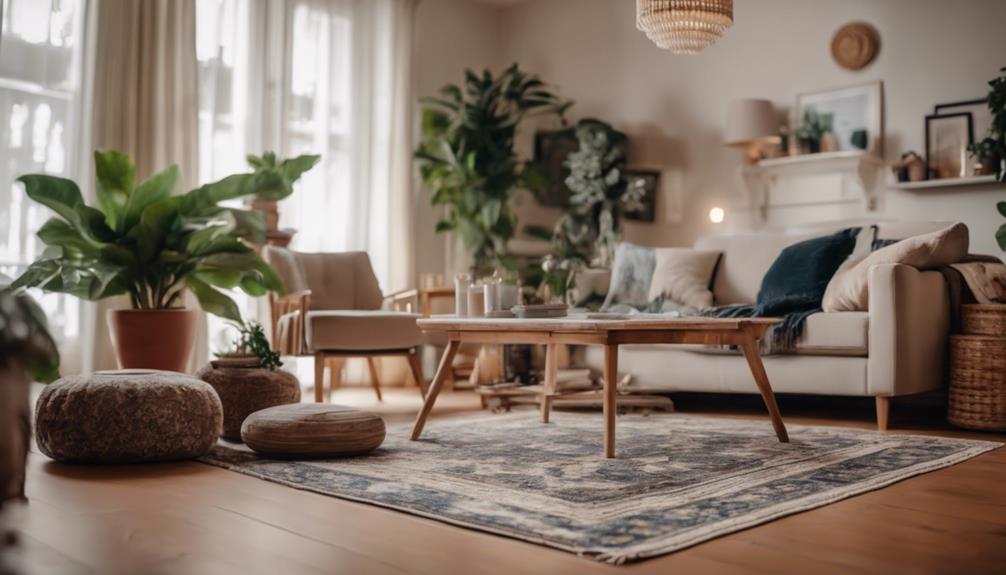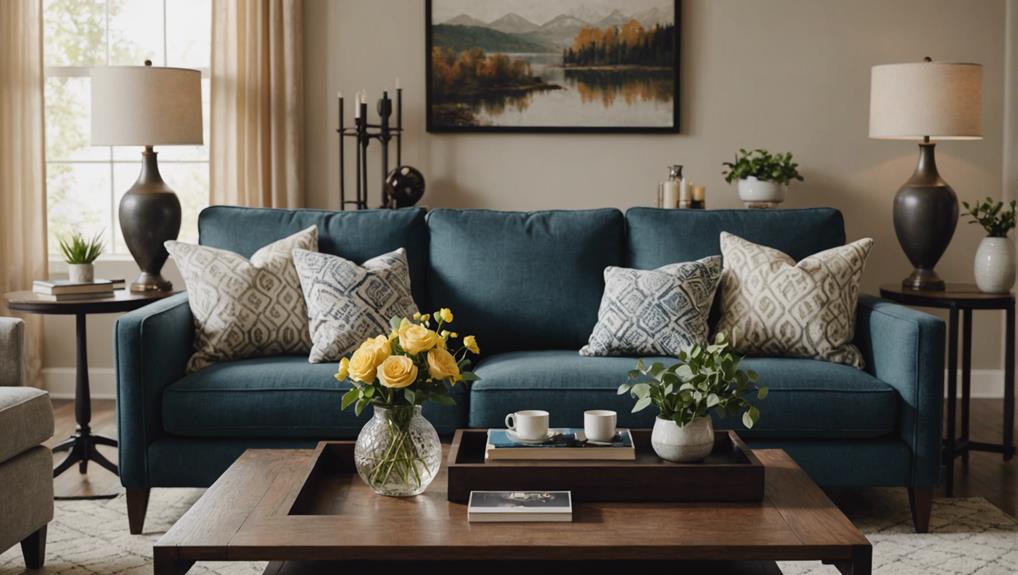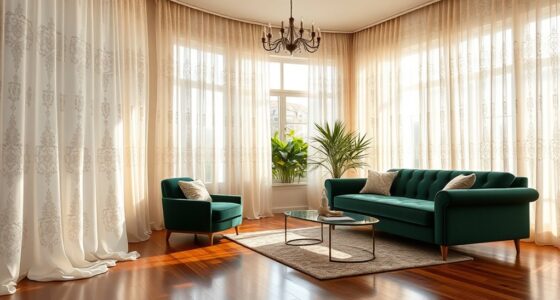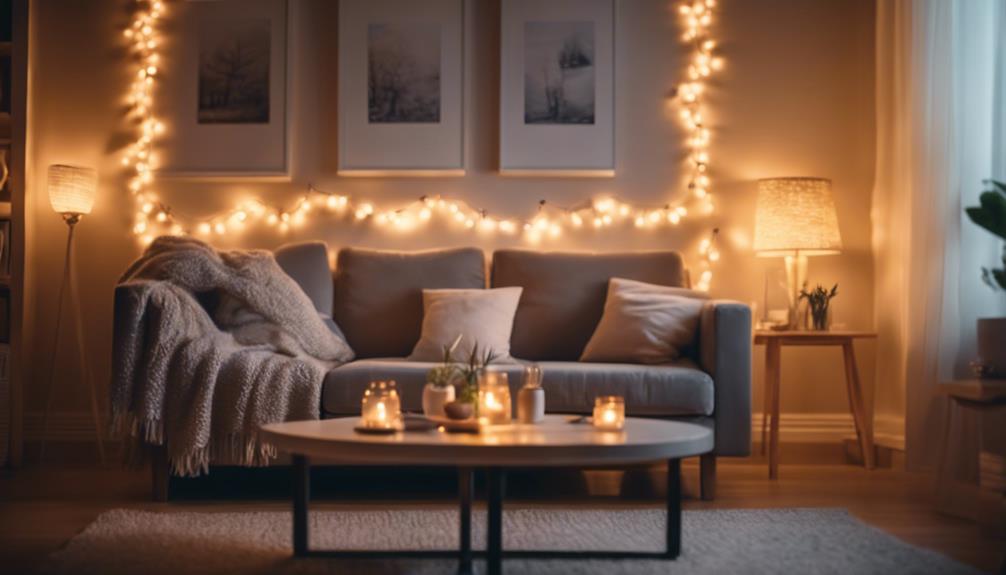Mixing patterns, textures, and colors in textiles can truly elevate your style. Start by choosing a couple of contrasting fabrics that complement each other, like cozy wool with sleek silk. Pay attention to the weight and drape to guarantee a harmonious look. Incorporate layers, like a textured knit sweater over a chiffon dress, for depth. Stick to a unified color palette of 3-4 shades to keep things cohesive and avoid visual clutter. Want to learn more about successfully blending these elements to create stunning outfits? There's plenty to explore that can enhance your textile mixing skills!
Key Takeaways
- Understand the difference between textures and patterns to create visually appealing outfits through effective mixing techniques.
- Start with two contrasting fabrics that complement each other for a balanced and dynamic look.
- Utilize a unified color palette of 3-4 shades to ensure cohesion when mixing bold patterns and textures.
- Experiment with layering different fabric types and scales for added depth and interest in your outfits.
- Incorporate accessories to enhance texture and elevate the overall appearance of your ensemble.
Understanding Textures and Patterns

When you immerse yourself in the world of textiles, understanding textures and patterns is essential for creating stylish outfits.
Texture refers to the surface quality of a fabric and can be smooth, rough, soft, shiny, or matte. Each type impacts the overall vibe of your look.
Patterns, on the other hand, involve repeated designs like stripes, polka dots, and florals, which can enhance visual interest when mixing and matching.
To create harmonious outfits, it's vital to grasp the relationship between textures and patterns. Mixing heavy textures with lighter ones adds depth and balance, while color coordination can unify your choices.
Stick to a common color or complementary shades to tie everything together.
Don't shy away from experimenting with different scales; combine large patterns with smaller ones for a dynamic effect. This prevents overwhelming visuals and keeps your outfit engaging.
Remember, the key to mastering textile mixing lies in your willingness to try new combinations while maintaining a sense of balance and cohesion.
Popular Fabric Textures

Five popular fabric textures dominate the fashion landscape, each bringing its own unique appeal to your wardrobe.
First up is denim, a durable fabric that's perfect for casual wear. Its versatility and ruggedness allow you to mix and match effortlessly.
Next, silk stands out with its smooth, luxurious feel, ideal for formal occasions and evening events that demand elegance.
Wool, on the other hand, offers warmth and a distinctive texture, making it a go-to for cozy garments like sweaters and coats, especially in colder climates.
If you want to add an edgy touch, leather is your best friend. This sophisticated fabric enriches outfits, often found in jackets, bags, and shoes that scream style.
Mastering Texture Mixing

Mastering texture mixing can truly transform your outfits, making them more dynamic and visually appealing. To elevate your style, make choices that incorporate a variety of textures. For instance, pairing a cozy wool sweater with a sleek silk blouse can create a stunning contrast, adding depth to your look.
Layering fabric types like chiffon and denim not only enriches your ensemble but also opens up unique styling opportunities.
When mixing textures, remember that contrast is essential. Combining smooth fabrics, such as leather, with rougher materials like cotton enhances your overall aesthetic without overwhelming your outfit. Pay attention to the drape and weight of the materials, as these factors greatly impact the fit and silhouette of your look.
Start with one statement textured piece—like a bold sequined top—and build around it to maintain balance. This approach keeps your outfit from feeling cluttered and allows the textures to shine.
Tips for Successful Mixing

To achieve successful texture mixing, start with two contrasting fabrics that complement each other, like a cozy wool sweater paired with a sleek silk blouse.
Remember to take into account the season, choosing lighter materials for summer and heavier ones for winter.
This approach not only adds visual interest but also keeps your look balanced and appropriate.
Start With Two Textures
Mixing textures can elevate your outfit, and starting with just two contrasting ones is a smart way to begin. Choose textures that create visual interest, like soft silk paired with rough denim. This combination adds depth without overwhelming your look. As you get comfortable, you can gradually introduce more textures.
To guarantee your outfit feels cohesive, make sure the chosen textures complement each other in weight and drape. For instance, pairing heavier fabrics like wool with lighter ones such as chiffon maintains balance.
Incorporating accessories can also enhance your outfit; think about adding a leather handbag or a knitted scarf for extra texture without complicating your main pieces.
Here's a handy table to visualize some great texture pairings:
| Texture 1 | Texture 2 | Ideal Use |
|---|---|---|
| Silk | Denim | Casual chic look |
| Wool | Chiffon | Layered outfits |
| Leather | Knit | Accessorizing |
| Velvet | Cotton | Elegant occasions |
Experiment with layering, like wearing a textured knit over a smooth blouse, to achieve a dynamic look that's eye-catching.
Seasonal Fabric Considerations
Four key seasonal fabric considerations can help you achieve successful texture mixing in your outfits. First, choose lighter fabrics like linen and cotton during warmer months for breathability. In colder seasons, opt for heavier textures like wool and cashmere to keep warm and comfortable. This balance makes all the difference when you're dressing for the weather.
Next, incorporate seasonal colors into your fabric choices. Earthy tones in fall and vibrant hues in spring not only elevate your outfits but also reflect the season's spirit. When layering, remember to take into account the weight of your materials. For instance, a silk blouse can easily be layered under a chunky knit sweater in winter without compromising style.
Additionally, textures like denim and leather are versatile for changing seasons, providing both style and practicality. They make great choices whether you're moving from spring to summer or fall to winter.
Examples of Textured Outfits

When you want to elevate your outfit with texture, consider how different fabrics can work together to create visual interest.
Combining textures can transform your look from ordinary to extraordinary. Here are three examples to inspire your next ensemble:
- Casual Chic: Pair a durable denim jacket with a soft cotton tee and stylish leather boots. This combination offers a balanced texture that's perfect for everyday wear.
- Sophisticated Elegance: For a formal event, opt for a smooth silk blouse, a warm wool pencil skirt, and elegant heels. This outfit exudes sophistication through the interplay of soft and structured textures.
- Layered Depth: Create a layered ensemble by wearing a textured knit sweater over a delicate chiffon dress, complemented by ankle boots. This mix adds depth and interest, making it ideal for cooler days.
Color Coordination Essentials

Elevating your outfit with texture is only part of the equation; color coordination plays an essential role in achieving a polished look. To master color coordination essentials, start by identifying a common color that can unify different prints and patterns. This creates a cohesive look that ties your outfit together seamlessly.
Incorporating color palettes and patterns can also enhance your styling efforts and guarantee your outfits are on-trend.
Utilizing a color wheel can be a game-changer. It helps you discover complementary colors that enhance your overall aesthetic when mixing patterns. Keep it simple by limiting your color palette to 3-4 shades. This approach simplifies the combination process and prevents visual clutter, ensuring your outfit appears well thought out.
Don't forget about neutrals! They serve as a strong base for bolder patterns, allowing them to stand out without overwhelming the overall design.
Additionally, incorporating seasonal colors can refresh your style and keep your outfits relevant for various occasions throughout the year.
Balancing Bold Patterns

When you want to create a striking focal point in your design, using bold patterns can be effective, but it's essential to stick to a unified color palette for cohesion.
Mixing different sizes of patterns adds visual interest, but be mindful not to let the larger designs overshadow the space.
Incorporating solid colors between busy patterns can provide a much-needed break, ensuring your space feels balanced and inviting.
Focal Point Strategy
Bold patterns can frequently transform a space, but using them wisely is key to achieving balance. The focal point strategy helps you create visual interest without overwhelming your room.
By incorporating elements of modern farmhouse design, such as neutral color palettes and natural materials, you can further enhance your bold patterns while maintaining a cohesive look.
Here's how to effectively mix bold patterns:
- Choose a Statement Piece: Use a bold pattern on a single item, like a statement sofa or an accent wall, to draw attention and serve as your focal point.
- Mix Scales: Pair large-scale patterns, such as geometric prints, with smaller-scale ones, like delicate florals. This combination enhances balance and prevents clashes.
- Incorporate Solid Colors: Use solid colors as interludes among bold patterns. This provides visual breaks and keeps the design cohesive, reducing chaos.
Unified Color Palette
Achieving harmony in a space filled with bold patterns often comes down to a unified color palette. By limiting your palette to 3-4 shades, you can guarantee that those striking designs blend harmoniously rather than clash. When you select a common hue across various patterns, you create a visual thread that enhances cohesion throughout the room. This approach is reminiscent of the way mood boards essential for visualizing design concepts can help clarify your vision and direction.
Using neutral tones as a grounding base is essential. They allow more vibrant patterns to pop without overwhelming your overall aesthetic. Be sure to incorporate solid colors intermittently; this tactic breaks the boldness of patterns and provides visual relief, preventing fatigue in your design.
When mixing patterns, aim for a unified color scheme that maintains balance while allowing each pattern to shine on its own. This approach guarantees that your space feels intentional and well thought out rather than chaotic.
Embrace the power of a unified color palette to create a beautifully balanced environment that showcases your bold patterns while promoting a sense of unity. By following these guidelines, you'll master the art of mixing textiles with confidence and flair.
Size Variation Techniques
Mixing various sizes of patterns can create a dynamic visual balance that keeps your space engaging without feeling overwhelming.
As an interior designer, you'll want to blend large-scale and smaller-scale designs effectively. Here are three key techniques to achieve this balance:
- Choose a Consistent Color Palette: Stick to a unified color scheme to tie together different sizes of patterns. This helps maintain harmony in your design.
- Incorporate Solid Colors: Use solid colors as interludes between bold patterns. These can provide visual relief and make your overall composition feel more approachable.
- Limit Bold Patterns: To avoid chaos, restrict the number of bold patterns in one area. Consider using them in smaller accents like cushions or artwork, allowing the larger patterns to shine without overwhelming the space.
Sustainable Textile Choices

When it comes to making sustainable textile choices, you'll find that opting for eco-friendly materials can greatly reduce your environmental impact. Fabrics like organic cotton, hemp, and bamboo are great options, as they use fewer resources than conventional textiles.
Certifications such as GOTS and OEKO-TEX guarantee these materials meet strict environmental and safety standards, ensuring healthier choices for you and the planet.
Consider the benefits of recycled textiles, too. For instance, fabrics made from post-consumer plastic bottles considerably cut down waste and conserve precious resources. Did you know that recycling just one ton of fabric can save around 20,000 gallons of water? That's a huge impact!
Choosing locally sourced fabrics is another way to minimize your carbon footprint while supporting local economies.
And don't forget about incorporating upcycled materials into your designs. Not only do they promote sustainability, but they also allow you to create unique pieces with large patterns that stand out.
Frequently Asked Questions
How to Mix and Match Patterns and Colors?
To mix and match patterns and colors, start with a unifying hue, combine varying scales, limit to 3-4 shades, add solid colors for breaks, and layer textures for depth. Experiment until you find your unique style!
What Fabrics Don't Look Good Together?
When mixing fabrics, think of harmony in music. Avoid pairing shiny materials or rough textures with delicate fabrics; they clash like discordant notes. Heavy and lightweight fabrics can create an awkward silhouette, so choose wisely.
How to Create Outfits by Mixing and Matching Clothing Textures?
To create outfits by mixing textures, start with a dominant fabric like wool, then layer in lighter materials like silk. Use accessories for added depth and keep your color palette cohesive for a balanced look.
How to Match Patterns in Interior Design?
To match patterns in interior design, start with a focal pattern and add smaller ones. Limit your color palette, mix scales, use solids for breaks, and layer textures for depth without overwhelming the space.
Conclusion
As you immerse yourself in the world of textile mixing, remember that each fabric tells a story waiting to unfold. With careful pattern play and color choices, you can create outfits that not only stand out but also reflect your unique style. But what happens when you push the boundaries of mixing? Will you discover a new favorite combination or stumble upon a fashion faux pas? The thrill lies in the experimentation—so go ahead, take that leap!










